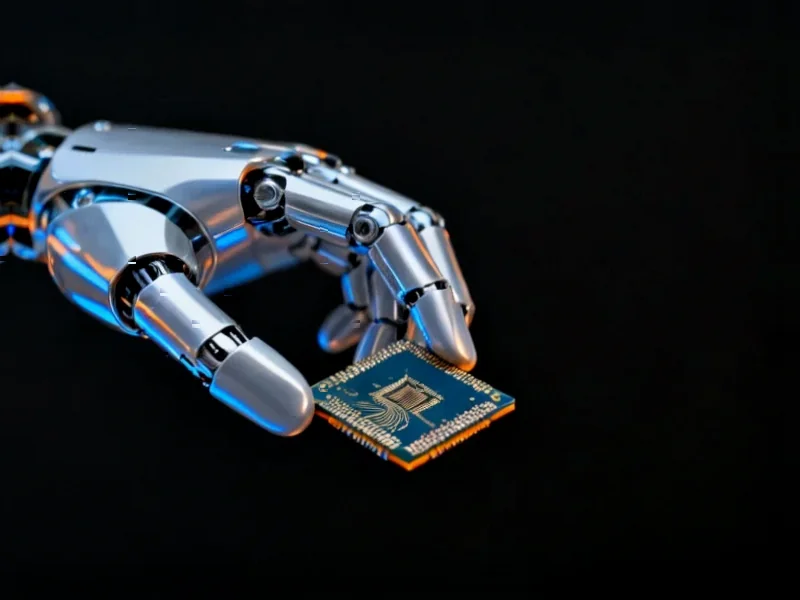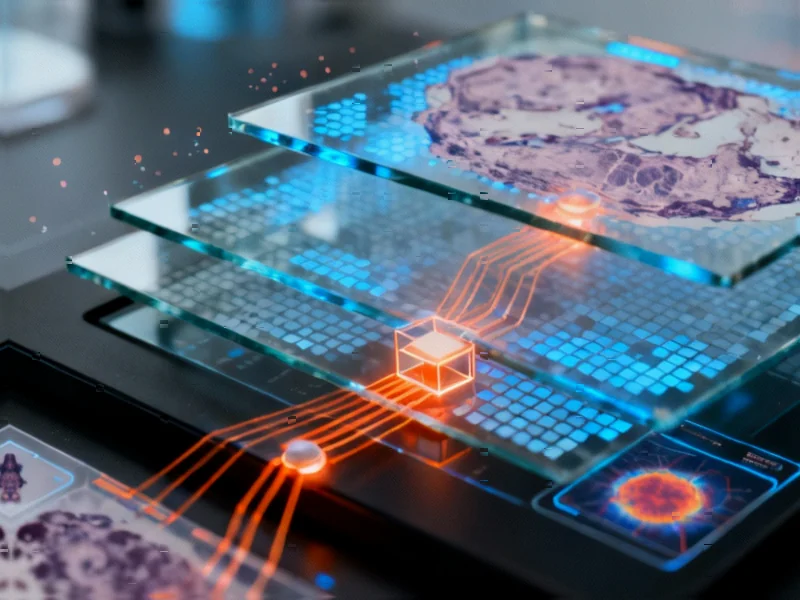AI Revolution Reshaping Workforce Dynamics
Goldman Sachs CEO David Solomon has joined prominent business leaders in addressing concerns about artificial intelligence’s impact on employment, suggesting that while job functions will inevitably change, the transformation presents significant opportunities for businesses and workers alike. According to his recent comments on CNBC’s Squawk Box, technological disruption is nothing new, though AI’s accelerated pace warrants attention to transitional challenges.
Table of Contents
Historical Context and Accelerated Change
“Technology has been having an impact on headcount, the way people work, what workers you have, for decades and decades and decades,” Solomon stated, emphasizing the continuity of technological evolution. However, sources indicate that the current AI revolution differs in its velocity, potentially creating what Solomon described as “a little bit more volatility or an unsettled transition around certain job functions.”
The Goldman Sachs leader pointed to his own institution’s transformation over 25 years, noting the bank now employs approximately 13,000 engineers compared to virtually none decades ago. This evolution demonstrates how technological advancement typically creates new roles even as it renders others obsolete, analysts suggest.
Executive Optimism and Economic Flexibility
Despite acknowledging displacement risks, Solomon expressed confidence in the economy’s resilience. “We have an incredibly flexible, nimble economy. We have a great ability to adapt and adjust,” he commented. The report states that Solomon remains “excited” about AI’s potential, projecting that over a three to five year timeframe, the technology will provide “more capacity to invest in our business.”
This perspective appears widespread among corporate leadership. “I can’t find a CEO that I’m talking to, in any industry, that is not focused on how they can reimagine and automate processes in their business to create operating efficiency and productivity,” Solomon observed.
Broader Industry Perspectives
Nvidia CEO Jensen Huang reportedly characterized the current period as “the beginning of an AI revolution,” suggesting the technology might even enable a four-day workweek. However, Huang cautioned against expectations of reduced workloads, noting “I have to admit that I’m afraid to say that we are going to be busier in the future than now.”
Microsoft’s Satya Nadella drew parallels to England’s Industrial Revolution, acknowledging that labor redistribution—while a “scary word”—ultimately transformed societal views on work. According to his analysis, the AI revolution will similarly trigger societal challenges that will be addressed through innovative work solutions.
Current Impact Across Industries
The automation wave is already affecting specific sectors, reports indicate. Customer service roles have been particularly vulnerable, with Salesforce cutting 4,000 positions earlier this year and Klarna’s AI chatbot now performing the equivalent work of 700 human agents.
Entry-level Wall Street positions also face automation threats. According to the New York Times, OpenAI has enlisted over 100 former investment bankers to train AI models for financial modeling tasks, potentially automating hours of junior analysts’ responsibilities.
Analysts suggest that generative AI disproportionately affects certain professions, including interpreters, translators, historians, passenger attendants, sales representatives, writers, and telephone operators. Meanwhile, blue-collar positions such as dredge operators, bridge and lock tenders, water treatment plant operators, and rail-track layers appear less immediately vulnerable to automation.
Long-Term Outlook
While the transition presents challenges, business leaders maintain that historical patterns of technological adoption provide cause for measured optimism. The current revolution may unfold more rapidly than previous transformations, but sources indicate the fundamental dynamic remains consistent: technological innovation ultimately creates new opportunities even as it displaces established roles.
As Solomon summarized, “Yes, there will be job functions that shift and change…But I’m excited about it.” This sentiment reflects a broader executive consensus that embraces AI’s potential while acknowledging the inevitable workforce transitions required to realize its benefits.
Related Articles You May Find Interesting
- Banking Industry Faces $170 Billion AI Profit Squeeze, McKinsey Analysis Warns
- Adlice Protect Emerges as Next-Generation Security Solution with Proactive Malwa
- Super Micro Stock Dips Following Preliminary Revenue Miss, AI Outlook Remains St
- Former Whole Foods CEO Reveals Activist Investor Threats Forced Amazon Sale
- AI Model Predicts Manufacturing Parameters to Achieve Target Material Properties
References
- https://www.youtube.com/watch?v=tzJEgYwi5cs
- http://en.wikipedia.org/wiki/Artificial_intelligence
- http://en.wikipedia.org/wiki/Chief_executive_officer
- http://en.wikipedia.org/wiki/Goldman_Sachs
- http://en.wikipedia.org/wiki/Cohort_(statistics)
- http://en.wikipedia.org/wiki/Squawk_Box
This article aggregates information from publicly available sources. All trademarks and copyrights belong to their respective owners.
Note: Featured image is for illustrative purposes only and does not represent any specific product, service, or entity mentioned in this article.



